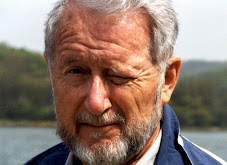Essay 12
ROLLING ROCKS IN THE ANDES
Sometime in the 1960’s I was in South America, and I made it a point to visit Professor John Irwin who was spending a year in Chile. His purpose there was to take atmospheric measurements in conjunction with the establishment of the Astronomical Observatory at Cerro Tololo. Immediately to the south of Cerro Tololo was Cerro Morado, and John and his wife Ruth were living there.
The year I most needed Prof. Irwin him he was on a sabbatical in South Africa. We spent the summer of 1950 working at Mt. Palomar. John and Ruth were inveterate travelers, so it was quite natural for us to develop a habit of meeting together wherever that might be. Places where we met included England, Germany, Greece, Switzerland, Hawaii, Chile, Australia, and a good many observatories scattered throughout the United States.
John had a big van, and he was eager to take me to a very remote part of the Andes well to the south and “up” from Cerro Morado. There was a very primitive road but it was doable. We took fuel, food, camping equipment, and made our way to a spring where there was an abandoned building. (The dry side of the Andes is DRY, for we were in that part where it might rain once in a century.) On our way we came upon a Chilean sheep herder. He was exceedingly glad to see us as we were the first people he had seen in a couple of months. We offered him food, candy, water, clothing—what did he need? He politely turned down all our offers. He just wanted a wife.
The next day we were more than 12000 feet high and the road grazed the edge of an abyss so deep and dark that we could not see the bottom. Indeed we could not even see into it. How deep do you suppose it was? Well, right over there was a teetering rock about the size of the van. It was one of a whole row of rocks destined to fall in the very near future! Do you suppose we could roll that rock into the canyon, count the seconds for time of fall, and determine the depth that way? We had not seen anyone for a whole day except the sheep herder, and were quite sure that no one at all was anywhere nearby. John assured me that there was no way I could roll that rock. That was certainly a challenge coming from a highly respected professor and all, so I went to work.
It took me maybe 20 minutes of digging and thinking before I felt the rock tremble of a moment. Then I knew it was possible. Finally it very slowly began to move, rapidly picked up speed, smashed down the steep slope, rolled horizontally to the canyon lip, then shot into the canyon. There was silence for perhaps seven seconds, and then there was a mighty roar that is difficult to describe. Allowing for the speed of sound coming back to us, the depth must have been more than 2000 feet. Rather than try to describe the sound, I will report that we rolled rocks for the next hour or so, and John worked every bit as hard to do it as I had done on the first one. It was a wonderful moment I particularly enjoy remembering, for I can drive almost any environmentalist right out of his mind with this story. I am one who has made a lasting impression on a magnificent canyon in the Chilean Andes. I know this is true, even if nobody ever sees it!
Bur I must admit that Mother Nature was getting those rocks ready to roll, and would have done it on her own before too long. We were just good observers!
Saturday, September 27, 2008
Subscribe to:
Post Comments (Atom)


No comments:
Post a Comment